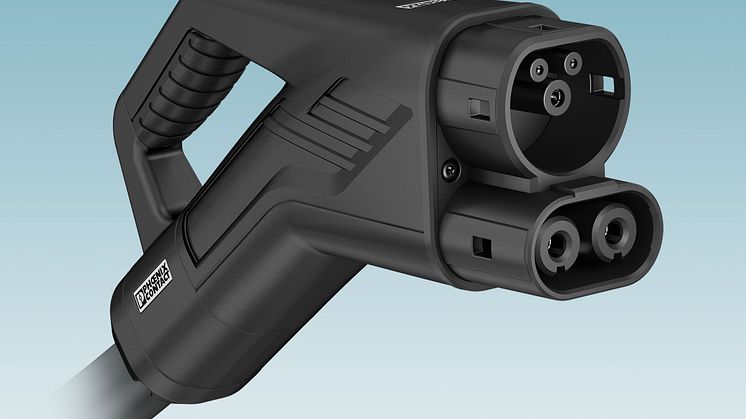
News -
Type 2 CCS charging cables in the new housing design – robust, easy to maintain, and well-thought-out
The new generation of the proven Charx connect standard CCS charging connectors from Phoenix Contact is suitable for setting up DC charging stations and covers the medium power range from 150 to 250 kW (150 to 250 A/1,000 V). In the new housing design, the product family offers many improvements in terms of robustness, safety, billing, and maintenance.
The clever sealing concept of the Charx connect standard DC charging cables ensures complete longitudinal water tightness, which completely protects the live parts inside the housing against moisture. This maximizes the electrical safety of the product family for users. The innovative two-chamber sealing system marks the next stage in the development of the DC charging cable sealing systems from Phoenix Contact: by physically separating the DC+ and DC- power contacts, short circuits can be completely ruled out. High-quality materials also ensure the necessary robustness and long service life of the charging connectors – even when in continuous use outdoors.
For the reliable billing of charging processes compliant with calibration laws, the DC charging cables and connectors are already prepared for four-conductor measurement technology and are thus future-proof. The four-conductor measurement technology allows recording of the power dissipation in the charging cable in order to precisely determine the energy transferred to the electric vehicle.
Charging connectors at semi-public and public charging stations require regular maintenance intervals, particularly due to improper handling. With the help of repair kits, mating face frames and power contacts on the charging connector can be replaced quickly, easily, and sustainably.
With a broad portfolio for all DC charging applications in the medium power range, Charx connect standard facilitates the extension of DC charging infrastructure. The product family is particularly robust, safe, and easy to maintain. This saves time and money and increases the availability of charging infrastructure in the field.


